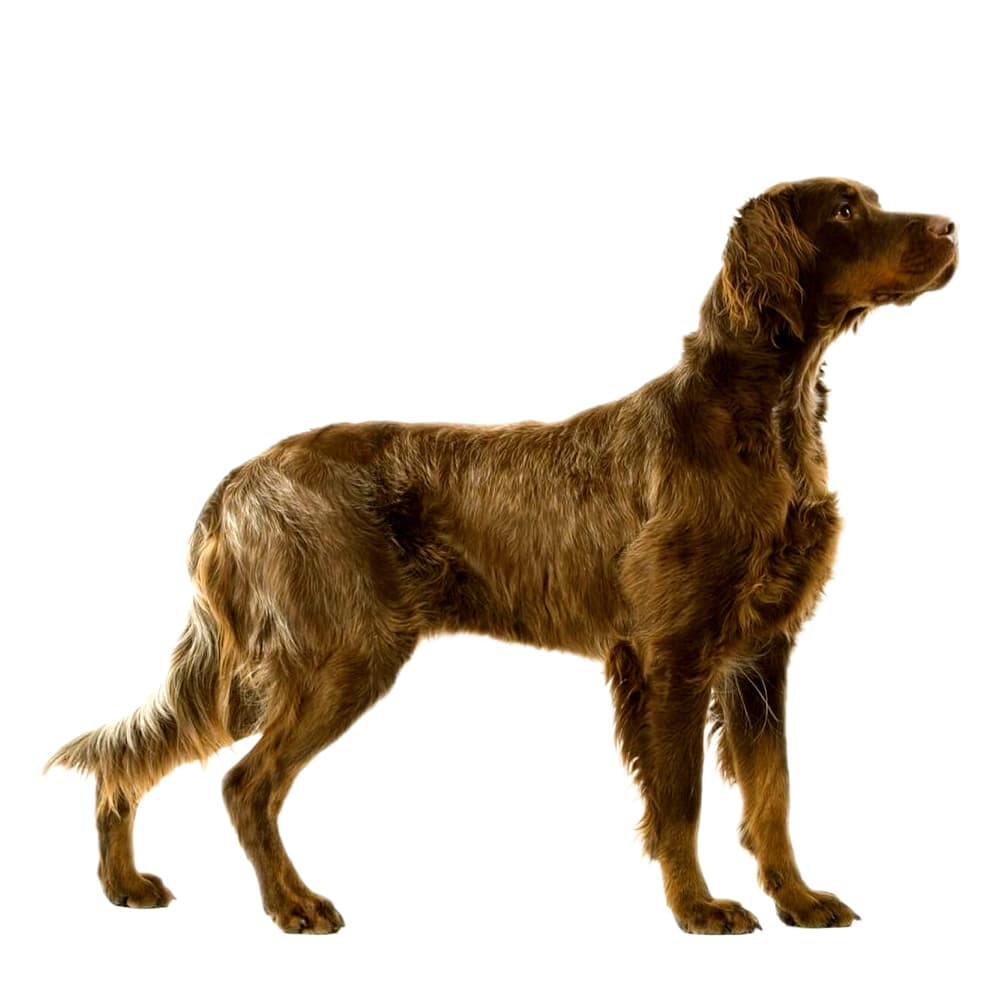Basepaws analyzes this breed as part of a group of other breeds.



Basepaws analyzes this breed as part of a group of other breeds.


Basepaws analyzes this breed as part of a group that also includes Blue Picardy Spaniel, Picardy Spaniel.
Despite being distinct in characteristics and origin, some pairs or groups of breeds lack the number of genetic differences required to distinguish these populations from one another, particularly when only a subset of these differences are inherited by a mixed breed dog. As we continue to expand our breed database, we aim to increase the resolution of our ancestry algorithm such that differentiating between increasingly specific ancestral sources becomes possible.
The Picardy Spaniel, also known as the Épagneul Picard, is an ancient French gun dog breed that hails from the Picardy region of France. Its origins can be traced back to the 14th century, making it one of the oldest spaniel breeds. These dogs were traditionally used for hunting, specifically for flushing and retrieving game in the dense and marshy terrains of Picardy. Over the centuries, the breed's exceptional hunting skills and adaptability helped it gain popularity not only in France but also in other parts of Europe.
Picardy Spaniels are known to be generally healthy dogs, but as a larger breed they are at risk for developing orthopedic problems, such as hip and elbow dysplasia. They may be prone to ectropion and entropion. Genetic testing is recommended, including for the following additional conditions: hyperuricosoria, degenerative myelopathy, and progressive rod-cone degeneration.
Picardy Spaniels are known for their friendly and affectionate nature. They are intelligent, eager to please, and form strong bonds with their families. As a working breed, they have a strong hunting instinct and require regular mental and physical stimulation. Early socialization and training are essential to ensure they grow into well-mannered and well-adjusted adult dogs. While generally good with children and other pets, supervision is recommended during interactions due to their hunting background.
A canine genetic lineage is a group of individuals or entire breeds that descended from common ancestors predating modern breed formation. Often these lineages are associated with a ‘type’ of dog with a unique historical working role and associated behaviors (e.g., herding, scent hunting, etc.).
The Pointer-Spaniel lineage encompasses both pointer and spaniel breeds. They were both bred for their specialized hunting abilities in Europe. Pointers locate game and freeze in a stance, called “pointing”, to indicate to their hunter that birds are close by. Spaniels were bred to find game in underbrush and retrieve it. Both pointer and spaniel breeds were bred to enhance their strong senses, trainability, and endurance as these are advantageous in a hunting partner. Spaniels and pointers are known for their strong work ethic, ability to work closely with humans and agility. These dogs’ ability to work closely with their hunters makes them an asset during a hunt because they follow direction well and know how their hunters want them to proceed.
Example breeds with ancestry from this lineage include English Cocker Spaniel, Irish Red Setter, and German Shorthaired Pointer.
The Picardy Spaniel's coat color often resembles that of a gray partridge, which provides excellent camouflage while hunting in the field.
The Picardy Spaniel has a distinctive double coat that provides protection during harsh weather conditions. The outer coat is long, slightly wavy, and dense, while the undercoat is soft and insulating. The breed's coat is designed to withstand the rigors of hunting in various terrains and climates.
The breed almost faced extinction after World War II, but dedicated efforts by enthusiasts helped revive and preserve the breed's population.
The Picardy Spaniel is relatively rare outside of France, making it a unique and sought-after breed for dog enthusiasts.
https://www.picardyspaniel.org/
https://www.fci.be/en/nomenclature/PICARDY-SPANIEL-108.html
https://www.ukcdogs.com/epagneul-picard
https://www.dogzone.com/breeds/picardy-spaniel/
Recommended by top vets with decades of experience
21 breeds
64 genetic health markers
50 genetic trait markers
